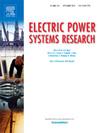A novel method for jointly monitoring household flexibility resources considering multiple correlations
IF 3.3
3区 工程技术
Q2 ENGINEERING, ELECTRICAL & ELECTRONIC
引用次数: 0
Abstract
Although demand response is vital for managing distribution networks with substantial renewable energy, accurately monitoring behind-the-meter flexibility resources remains challenging for developing precise household response plans. To address this, we propose a novel method for jointly monitoring household flexibility resources. The unified monitoring framework comprehensively explores the correlations between environmental factors and flexibility resources, as well as among these resources. It better addresses the complex usage behaviors of adjustable appliances and the high variability of rooftop photovoltaics while reducing computational complexity in monitoring multiple resources. The proposed multi-task learning model integrates a synergistic mechanism of shared feature extraction and task-specific adaptation. It first employs a transformer-based module to capture cross-task temporal features that integrate electrical and environmental correlations. A gated network then adaptively selects relevant features for each resource, which are processed by tower networks to capture long-term patterns and short-term variations. Additionally, we introduce quantile values of flexibility resources as monitoring targets to guide the model in learning power distribution, enabling more precise demand response plans. Experiments demonstrate that our method outperforms existing methods in monitoring various flexibility resources within and across households on public datasets. Furthermore, ablation experiments and model complexity analysis highlight the effectiveness of our method.
一种考虑多重相关性的家庭弹性资源联合监测新方法
尽管需求响应对于管理具有大量可再生能源的配电网络至关重要,但准确监测表后灵活性资源对于制定精确的家庭响应计划仍然具有挑战性。为了解决这个问题,我们提出了一种联合监测家庭灵活性资源的新方法。统一的监测框架全面探索了环境因素与柔性资源之间以及这些资源之间的相关性。它更好地解决了可调节电器的复杂使用行为和屋顶光伏的高可变性,同时降低了监控多个资源的计算复杂性。提出的多任务学习模型集成了共享特征提取和任务自适应的协同机制。它首先采用一个基于变压器的模块来捕获集成电气和环境相关性的跨任务时间特征。然后,门控网络自适应地为每个资源选择相关特征,这些特征由塔网络处理,以捕获长期模式和短期变化。此外,我们引入灵活性资源的分位数值作为监测目标,以指导模型学习权力分配,从而实现更精确的需求响应计划。实验表明,我们的方法在公共数据集上监控家庭内部和家庭之间的各种灵活性资源方面优于现有方法。烧蚀实验和模型复杂度分析验证了该方法的有效性。
本文章由计算机程序翻译,如有差异,请以英文原文为准。
求助全文
约1分钟内获得全文
求助全文
来源期刊

Electric Power Systems Research
工程技术-工程:电子与电气
CiteScore
7.50
自引率
17.90%
发文量
963
审稿时长
3.8 months
期刊介绍:
Electric Power Systems Research is an international medium for the publication of original papers concerned with the generation, transmission, distribution and utilization of electrical energy. The journal aims at presenting important results of work in this field, whether in the form of applied research, development of new procedures or components, orginal application of existing knowledge or new designapproaches. The scope of Electric Power Systems Research is broad, encompassing all aspects of electric power systems. The following list of topics is not intended to be exhaustive, but rather to indicate topics that fall within the journal purview.
• Generation techniques ranging from advances in conventional electromechanical methods, through nuclear power generation, to renewable energy generation.
• Transmission, spanning the broad area from UHV (ac and dc) to network operation and protection, line routing and design.
• Substation work: equipment design, protection and control systems.
• Distribution techniques, equipment development, and smart grids.
• The utilization area from energy efficiency to distributed load levelling techniques.
• Systems studies including control techniques, planning, optimization methods, stability, security assessment and insulation coordination.
 求助内容:
求助内容: 应助结果提醒方式:
应助结果提醒方式:


